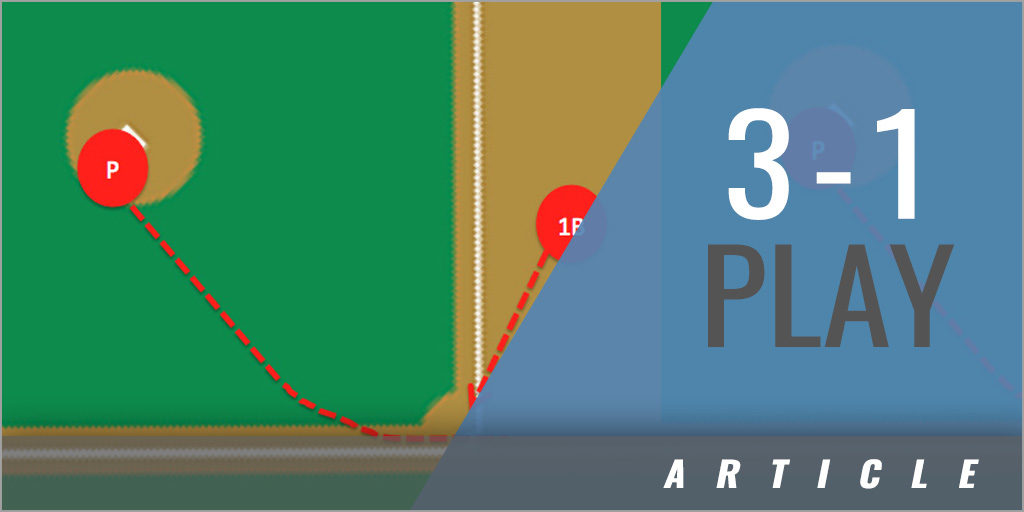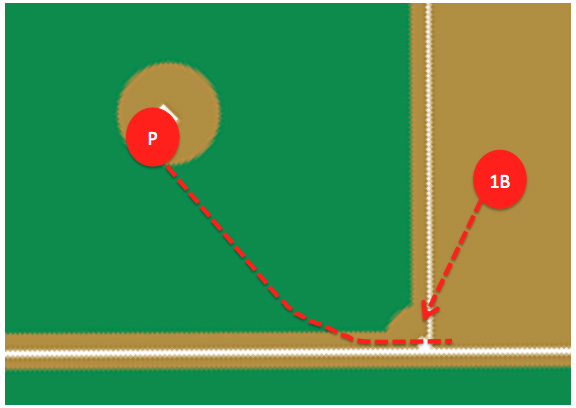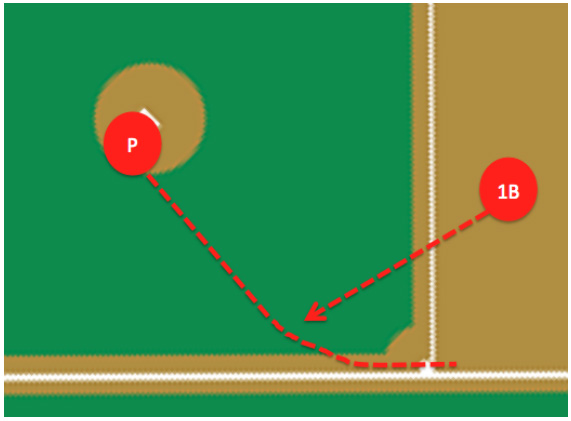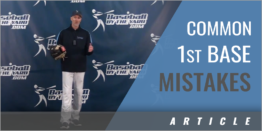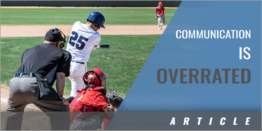|
By: Coach Bob McCreary Provided by: Baseball by the Yard A ball is hit to the first baseman and the pitcher runs over to cover the bag. The first baseman flips the ball to the pitcher for a routine out. Seems pretty easy. Of course, that's until you actually see teams try to do it in games and in practice. You'd think it would be pretty difficult to screw up such an easy play but teams at every level manage to do it. Like any other "easy" play that involves several moving parts, there are a boatload of little things that can wrong along the way. For the basic 3-1 play, it could be that the pitcher forgets or is late to cover the bag. He can take a bad path to the bag. The first baseman and/or the pitcher can drop the ball. The pitcher can miss touching first base. All of these things and more can be ironed out by practicing. However, even teams that practice the play regularly often make this common mistake - they get the ball to the pitcher too late. Here is a diagram which shows the timing of most 3-1 plays.
The problem with this timing is that the pitcher's eyes cannot be looking at two different things at the same time. If the pitcher focuses on the ball, he cannot see the bag and is more likely to miss it. If he focuses on touching the bag, he often takes his eyes off the ball and is more likely to drop it. Here is another diagram that shows better timing.
Getting the pitcher the ball as soon as possible allows him to focus 100% of his attention on both important things - catching the ball and touching the bag - separately. Based on the realities of game-like situations, it may not always be possible to get the ball to the pitcher as early as the diagram shows. However, getting the ball to the pitcher as early as possible should be the standard. |
